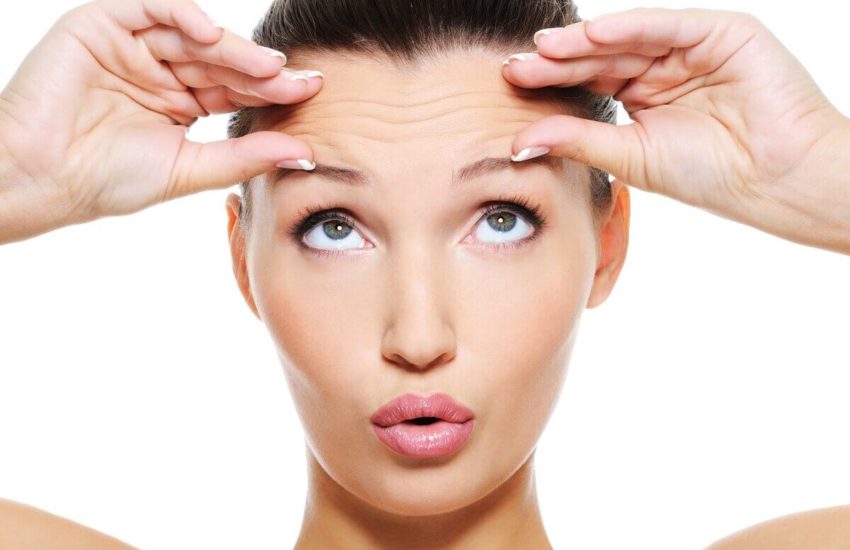Is the Cellulite the Woman’s Enemy?
If you are a woman, developing cellulite, particularly on your thighs and buttocks, may be one of your biggest fears.
Many women become very concerned when they notice that cellulite is beginning to make its’ presence known.
A lot of women believe that it is unsightly and they are often afraid to wear shorts, short dresses and skirts for fear that their cellulite is visible. Therefore, if you are worried about cellulite, you are definitely not alone.
Let’s take a closer look at what cellulite is along with some possible causes, how it affects women’s bodies as well as how to best deal with it.
What is cellulite?
Simply put, cellulite is a condition that makes the skin on your thighs, buttocks, hips, and abdomen appear lumpy (“Cellulite”, 2019).
In addition to lumps, dimples may also appear on the skin of the aforementioned areas on your body. Some women even say that they have “cottage cheese” on their thighs and buttocks.
While having cellulite on your body is not dangerous to your health, you may find it “unattractive” and it may decrease your confidence levels.
 Unfortunately, cellulite affects anywhere between 80% to 90% of post-pubescent females (Friedmann et al., 2017).
Unfortunately, cellulite affects anywhere between 80% to 90% of post-pubescent females (Friedmann et al., 2017).
Therefore, if you are one of the 10% to 20% of women who does not see any cellulite on your legs, buttocks and hips, consider yourself lucky.
It appears that being female of any race puts you at risk for cellulite.
How does cellulite affect women’s bodies?
While the causes of cellulite and its development are unclear, there is a possible link between its severity and genetic, lifestyle, environmental and hormonal factors (Tokarska et al., 2018).
Without a doubt, an unhealthy diet and a lack of exercise can contribute to the speed at which you develop cellulite (Tokarska et al., 2018).
Consuming processed foods that are high in fats has been linked to the development of cellulite.
However, there is still some uncertainty whether hormones and genetics play a bigger part in the development of cellulite than lifestyle factors.
 Up until recently, cellulite was primarily viewed as a cosmetic issue.
Up until recently, cellulite was primarily viewed as a cosmetic issue.
Let’s face it, no one enjoys seeing lumpy skin on their thighs and butt that looks like an orange peel when they look at themselves in the mirror.
If you are feeling unattractive because of cellulite, then it can definitely negatively impact your emotional well-being.
Many women place a lot of emphasis on their looks, which is why the beauty and weight loss industry is a multi-billion dollar industry.
Therefore, without a doubt, women who have cellulite are more likely to be anxious and feel insecure about their bodies.
Cellulite occurs when the adipose tissue degenerates. For those who may not be aware, adipose tissue is commonly known as “fat”.
Since most women store the majority of their fat on their hips, thighs and buttocks, then it makes sense why cellulite is common in those particular areas of the body.
Unfortunately, some women may develop cellulite during their late teen years. Others may only notice the formation of cellulite during or after pregnancy or even during menopause.
As cellulite becomes more severe, the skin of the affected area may become dry and thin. As a result, you may even experience some soreness in that area.
Cellulite stages.
Typically, cellulite develops in four stages depending on its severity.
At stage one, the skin appears smooth when sitting, standing or lying down but some wrinkling is visible when you pinch the affected area.
At stage two, the skin is generally smooth when standing or lying down but you can see more prominent dimples when you pinch the affected area.
Stage three is when cellulite is visible while standing without having to pinch your skin. Lastly, at stage four, cellulite is clearly visible at all times, regardless of your body position and you may experience some soreness and pain in the affected area.
The one thing that you must recognize is that cellulite affects different people in different ways.
How to deal with cellulite.
If you are worried about how your skin looks, there are some treatment options for you. However, unfortunately, some of those options may be expensive and often do not provide a permanent solution to the problem.
 Examples of such treatments include: laser, radiofrequency cryolipolysis, acoustic wave therapy, Cellfina, and surgery.
Examples of such treatments include: laser, radiofrequency cryolipolysis, acoustic wave therapy, Cellfina, and surgery.
Some of the aforementioned treatments will have more side effects and will be more invasive than others.
Therefore, it is very important to ask all the right questions before determining which treatment option is best for you.
Many of these options may also require multiple sessions to see any visible results, which can be very hard on your wallet, not to mention frustrating.
If you are not comfortable with the more invasive medical treatments, there are some natural ways for you to deal with cellulite. Although you may not be able to fully get rid of cellulite, you may be able to improve how your skin looks.
 First, you should increase your physical activity levels, especially if you lead a sedentary lifestyle.
First, you should increase your physical activity levels, especially if you lead a sedentary lifestyle.
Toning your muscles will reduce the amount of fat you have on your body and improve the appearance of your skin.
It is important to pick physical activities that you like doing so that they appear less like a chore.
Some examples of physical activities you can try doing include: brisk walking, running, jogging, stair climbing, using the elliptical trainer, yoga, Pilates and many more.
Second, it is important to improve your diet and make healthy eating a part of your life. For example, you should reduce the amount of processed foods you consume.
You should also limit your intake of alcohol, soft drinks, saturated fats, and simple sugars.
 However, it’s also important to increase the amount of fresh fruits and vegetables that you eat, as well as increase your fiber, whole grain and water intake.
However, it’s also important to increase the amount of fresh fruits and vegetables that you eat, as well as increase your fiber, whole grain and water intake.
While you may consider cellulite unattractive, it is important to learn how to love, appreciate and accept your body.
If you are in good health and you still notice that you have a bit of cellulite, you must recognize that it is a fact of life and you may not be able to completely eliminate it.
As you can see, cellulite is a common problem and the vast majority of women will develop it at some point in their lives.
While you may be able to improve how your skin looks through diet, exercise, and even some medical intervention, there is no guarantee that cellulite can be permanently cured.
Therefore, it is important to stay active, eat healthy and try not to worry too much about cellulite, particularly if it is not as severe.
References:
1. Cellulite (2019). Retrieved from https://www.mayoclinic.org/diseases-conditions/cellulite/symptoms-causes/syc-20354945
2. Friedmann, D. P., Vick, G. L., & Mishra, V. (2017). Cellulite: a review with a focus on subcision. Clinical, cosmetic and investigational dermatology, 10, 17–23. Retrieved from https://www.ncbi.nlm.nih.gov/pmc/articles/PMC5234561/
3. Tokarska, K., Tokarski, S., Woźniacka, A., Sysa-Jędrzejowska, A., & Bogaczewicz, J. (2018). Cellulite: a cosmetic or systemic issue? Contemporary views on the etiopathogenesis of cellulite. Postepy dermatologii i alergologii, 35(5), 442–446. Retrieved from https://www.ncbi.nlm.nih.gov/pmc/articles/PMC6232550


